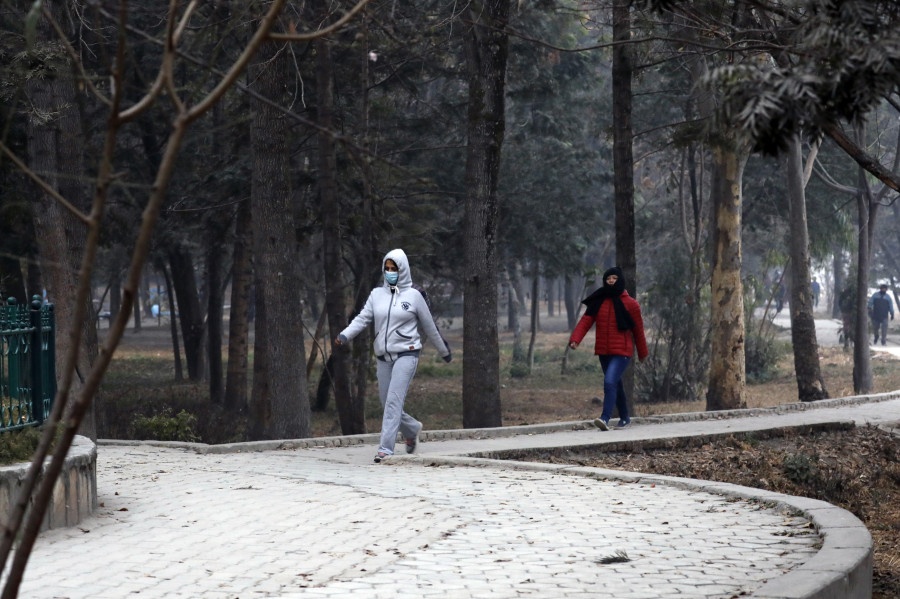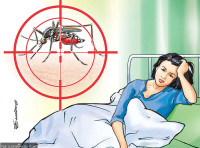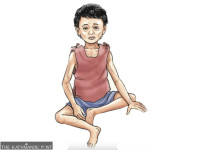Health
Here’s how to live an active life with a pulmonary disease
If you suffer from a pulmonary disease that has restricted your mobility, there is still hope.
Dr Rakshya Pandey
Patients with lung disease often feel helpless and limited in their activities due to breathlessness. In turn this may lead to inactivity, anxiety and depression. Pulmonary rehabilitation helps patients break this cycle and regain their confidence.
Pulmonary rehabilitation is a supervised intervention program that is designed to improve the physical and psychological condition of people with chronic lung disease. With a focus on exercise, education and support to help patients learn to breathe and function at the highest level possible, in very simple terms, pulmonary rehabilitation is like physiotherapy of the lungs.
How does pulmonary rehabilitation help with breathlessness?
Patients with a variety of lung diseases can benefit from pulmonary rehabilitation. It is mostly recommended for individuals with Chronic Obstructive Pulmonary Disease (COPD), bronchiectasis, interstitial lung disease, pulmonary hypertension, lung cancer, and lung transplant.
Most patients suffering from such chronic lung diseases can feel breathless even after very simple and sporadic physical movement. Due to fear of becoming breathless and to regulate their breathing pattern, they are forced to limit their physical activities, but physical inactivity, however, should it become routine—or a part of their lifestyle—the patients’ body gets used to the minimal physical activity. This de-conditioning can lead to the wasting of muscle strength in both arms and legs, pushing individuals to the point of disability. Pulmonary rehabilitation is about breaking this cycle.
There are many benefits of pulmonary rehabilitation. Apart from decreasing breathlessness and improved ability to cope with daily activities, it also helps to improve exercise capacity and lung function. This then results in improved quality of life, by minimising the chances of being hospitalised and decreasing the overall cost of one’s healthcare.

What are the components of pulmonary rehabilitation?
Pulmonary rehabilitation is not just a physical exercise programme. It aims to holistically improve patient’s health by means of exercise and education. The pulmonary rehabilitation programmes primarily include four components, with each helping patients to manage and monitor their own physical and mental health.
The first component of pulmonary rehabilitation helps patients build their physical strength and stamina. They learn about breathing techniques, which help them control their breathlessness.
To help patients understand the methods of their well-being while living with a chronic pulmonary disease, they are educated about their disease and available medicines. The medicine administration techniques are also covered comprehensively, by certified health professionals. They are also given advice on smoking cessation and ways to cope with flare up of their symptoms.
Up to 30 percent of patients suffering from these conditions have also been diagnosed with depression and anxiety. Therefore patients are also assessed for signs and symptoms of depression, and referred to a psychologist or psychiatrist if needed.
The fourth and final component helps patients understand the importance of nutrition and motivate them to address any shortcomings in their dietary habits. Proper nutrition plays a vital role for individuals suffering from pulmonary diseases—they are often underweight or overweight. Dietary assessment by a dietitian is an important component of a pulmonary rehabilitation program.
What happens in a pulmonary rehabilitation program?
The lung specialist will assess the patients and their disease status to see if they are suitable for pulmonary rehabilitation. Usually, patients are asked to take a walking test to measure the baseline function. Exercise program is then planned according to this baseline function. Eligible patients are then enrolled in the programme. Doctors work closely with physiotherapy teams, who play a crucial role.
The programme usually lasts between six and eight weeks. During this period, healthcare professionals supervise their exercises at least two to three times per week. Exercises are customised to patients’ needs—they include upper and lower body strengthening exercises and stamina building, or endurance training exercises in the form of walking or cycling. Patients also learn breathing exercises.
By the end of the programme, patients should have more stamina and feel confident in managing their symptoms and disease.
The benefits of pulmonary rehabilitation are many. Above all, pulmonary rehabilitation removes patients’ fear of exercise and make them more active and mobile.
It is important to not let the disease limit an individual’s activities. Pulmonary rehabilitation helps take back control of one’s life, to stay happy and healthy.
***
What do you think?
Dear reader, we’d like to hear from you. We regularly publish letters to the editor on contemporary issues or direct responses to something the Post has recently published. Please send your letters to [email protected] with "Letter to the Editor" in the subject line. Please include your name, location, and a contact address so one of our editors can reach out to you.




 11.74°C Kathmandu
11.74°C Kathmandu














